Q
Is the Kia EV6 100% electric?
Yes, the Kia EV6 is a 100% pure - electric vehicle. It belongs to the models developed by the Hyundai Motor Group based on the dedicated electric vehicle platform E - GMP. It doesn't rely on a fuel engine at all and is completely powered by the battery pack.
In the Malaysian market, the EV6 offers two battery capacity options, namely the 58kWh standard - range version and the 77.4kWh long - range version. The driving range can reach from 300 kilometers to over 500 kilometers (WLTP standard) depending on the version. It also supports a fast - charging technology with a maximum power of 350kW, which can charge the battery from 10% to 80% in just 18 minutes. This makes it highly suitable for the long - distance travel needs of Malaysian users.
The EV6 is also equipped with advanced in - vehicle technologies, such as a dual - motor all - wheel - drive system, an intelligent regenerative braking system, and the V2L (Vehicle - to - Load) function. It can output a torque of up to 605 Nm, and the 0 - 100km/h acceleration can be as fast as 3.5 seconds (GT - Line performance version), combining both performance and practicality.
For Malaysian consumers, the EV6 not only exempts from the road tax of fuel vehicles and enjoys tax incentives for electric vehicles, but also its globally unified battery warranty policy (usually 7 years/150,000 kilometers) can reduce the long - term usage cost. Meanwhile, Kia's dealer network in Malaysia is gradually improving the charging facilities support, which further enhances the convenience of this pure - electric vehicle.
Special Disclaimer: This content is published by users and does not represent the views or position of PCauto.
Related Q&A
Q
What is the life expectancy of the Kia EV6?
As an advanced electric vehicle, the lifespan of the Kia EV6 mainly depends on the usage and daily maintenance of its battery pack. According to industry standards, the battery packs of modern electric vehicles can usually maintain a range for 8 to 10 years or about 160,000 to 200,000 kilometers under normal usage conditions. After that, the battery capacity may gradually decline to 70% - 80% of its original capacity, but it can still be used. Kia offers a battery warranty policy for the EV6 in Malaysia, generally covering 7 years or 150,000 kilometers, which provides additional protection for the owners. It is recommended that owners conduct regular battery health checks and follow the manufacturer's maintenance guidelines to extend the vehicle's lifespan. The motor and transmission system of electric vehicles have a relatively simple structure and low maintenance costs, which is also one of the advantages of the EV6 in long - term use. Regarding the climate conditions in Malaysia, the high temperature and humidity may have a slight impact on the battery performance, but Kia's battery management system has been optimized for such environments to ensure stability and safety. Overall, as long as it is properly maintained, the EV6 can meet the long - term vehicle usage needs of most users. Meanwhile, the environmental - friendly features and low operating costs of electric vehicles also make it a practical choice in the Malaysian market.
Q
Is the Kia EV6 safe in a crash?
The Kia EV6 performs excellently in collision safety. It received a five-star rating in the tests conducted by the European New Car Assessment Programme (Euro NCAP), which proves that it meets high standards in aspects such as adult occupant protection, child occupant protection, vulnerable road user protection, and safety assist systems. It especially shines in the frontal and side collision tests. The vehicle has a sturdy body structure and a quick - reacting airbag system, which can effectively protect the safety of passengers inside the car.
For Malaysian consumers, the EV6 is also equipped with a wealth of active safety technologies, such as forward collision warning, lane - keeping assist, and blind - spot monitoring. These functions can further enhance safety during daily driving.
In addition, the EV6 uses a dedicated electric vehicle platform, and the battery pack is protected by a sturdy frame, which reduces the risk of battery damage during a collision. This is also an important consideration in the safety design of electric vehicles.
If you're thinking about buying an EV6 in Malaysia, you can have confidence in its safety performance. At the same time, it's recommended that you take a test drive at an authorized dealer to personally experience its driving feel and the practicality of its safety features.
Q
Is the Kia EV6 a good car?
The Kia EV6 is an electric vehicle that has attracted significant attention in the Malaysian market. It has won the favor of many consumers with its excellent performance and advanced technology. The EV6 is built on the E-GMP electric vehicle platform dedicated by the Hyundai Motor Group, offering excellent range. It can reach up to 528 kilometers (WLTP standard), which is suitable for long - distance driving needs in Malaysia. Its fast - charging function can charge the battery from 10% to 80% in just 18 minutes, greatly reducing the charging waiting time.
In terms of the interior, the EV6 is equipped with dual 12.3 - inch curved displays and an Advanced Driver - Assistance System (ADAS), exuding a strong sense of technology. In terms of power performance, the EV6 GT version has a powerful output of 585 horsepower, and it can accelerate from 0 to 100 km/h in just 3.5 seconds, meeting the needs of users who pursue driving pleasure.
For Malaysian consumers, the EV6 also has good adaptability. Its chassis tuning can handle the local variable road conditions, and the battery system has also been tested in high - temperature environments to ensure reliability. In addition, Kia has a relatively complete after - sales service network in Malaysia, providing convenient maintenance support for electric vehicle users.
Overall, the Kia EV6 is an electric vehicle that combines performance, technology, and practicality, making it suitable for consumers who want to try electric vehicles without compromising on the driving experience.
Q
How much does it cost to replace a Kia EV battery?
The cost of replacing a Kia EV battery in Malaysia generally ranges from RM30,000 to RM60,000. The specific price depends on the vehicle model, battery capacity, and whether you choose the original - factory or third - party repair services. For example, the Kia Niro EV has a larger battery pack, so its replacement cost might be higher.
In Malaysia, the price of an EV battery usually includes the cost of the battery module, labor fees, and system inspection fees. Some repair centers may offer installment - plan payment options or warranty services. It is recommended that car owners consult the officially authorized service centers for accurate quotes.
Moreover, the lifespan of an EV battery typically lasts 8 to 10 years or 150,000 to 200,000 kilometers. Regular maintenance, such as avoiding excessive fast charging or long - term full - charge storage, can extend the battery's performance. If the battery capacity drops below 70%, car owners can consider having a professional inspection to determine whether a replacement is necessary. In some cases, only individual battery modules need to be repaired to cut down the cost.
Currently, the Malaysian government offers tax incentives for EVs, and there might be a battery replacement subsidy policy in the future, which is worthy of car owners' attention.
Q
What is the Kia EV6 equivalent to?
As a pure-electric crossover SUV, the main competitors of the Kia EV6 in the Malaysian market include models such as the Tesla Model Y, Hyundai IONIQ 5, and Ford Mustang Mach-E. These models also focus on high performance and long range, and they are similarly positioned. The Kia EV6 stands out with its 800V ultra-fast charging technology, a maximum driving range of 510 kilometers (WLTP standard), and the GT version's ability to accelerate from 0 to 100 km/h in 3.5 seconds. It is particularly suitable for the needs of Malaysian consumers in terms of charging efficiency and driving experience.
When considering price and configuration, the EV6 is positioned between luxury and mainstream brands in the local market. Its positioning partially overlaps with that of models like the BYD Atto 3 or Toyota bZ4X, but it emphasizes more on sporty design and a sense of technology. For Malaysian users, the advantages of the EV6 also include the potential price advantage brought by local assembly (CKD) and the 8-year battery warranty policy provided by Kia Malaysia. These factors make it a practical choice for mid - to high - end electric vehicles.
In addition, the V2L (Vehicle-to-Load) function of the EV6 is very practical in the many outdoor scenarios in Southeast Asia, which further enhances its market competitiveness.
Q
Can you charge a Kia EV6 at Tesla?
Yes, the Kia EV6 can be charged at Tesla charging stations, but you need to pay attention to compatibility issues. Some of Tesla's Superchargers in Malaysia have been opened for electric vehicles of other brands. You just need to use a suitable adapter or start the charging via the Tesla app. However, the charging speed may be affected by the matching degree between the vehicle and the charging pile protocol. The Kia EV6 itself supports the CCS2 charging standard, and Tesla Superchargers also adopt the same standard, so it is theoretically compatible. But it is recommended to confirm whether the charging station supports non - Tesla vehicles before charging.
In addition, apart from Tesla, there are also other operators such as ChargeEV, Gentari, and Shell Recharge in Malaysia's public charging network, which provide CCS2 - compatible charging piles. EV6 owners can also choose these charging stations for a more flexible charging experience. For electric vehicle owners, it is very important to understand the vehicle's charging standard and the distribution of surrounding charging facilities. This way, they can better plan long - distance trips and avoid charging anxiety.
Q
How often do you need to service a Kia EV6?
According to the official advice from Kia Malaysia, as a pure electric vehicle, the maintenance cycle of the Kia EV6 is different from that of traditional fuel - powered cars. It is generally recommended to conduct a routine inspection every 12 months or every 15,000 kilometers, whichever comes first. The main items include checks on the battery system, brake fluid, coolant, as well as the tire and brake systems. Since electric vehicles don't have engines and transmissions, there's no need to change the engine oil or oil filter, which can significantly reduce maintenance costs and time.
For Malaysian car owners, the hot and humid climate may affect the battery life and the electrical system. Therefore, it's advisable to regularly check the battery cooling system and the tightness of high - voltage lines to ensure the vehicle maintains optimal performance in high - temperature environments.
In addition, although the mechanical structure of electric vehicles is relatively simple, attention still needs to be paid to the replacement of the air - conditioning filter, especially in areas with relatively serious air pollution in Malaysia. This helps maintain the air quality inside the vehicle.
The intelligent connectivity system of the Kia EV6 also undergoes OTA remote updates. Car owners don't need to go to the service center specifically for software upgrades. However, if there are system abnormalities, they should still contact the authorized repair points in time for handling.
Overall, the Kia EV6 has a lower maintenance frequency and is more cost - effective. However, regular maintenance is still the key to ensuring vehicle safety and extending its service life. It is recommended that car owners strictly follow the maintenance plan in the official manual.
Q
What are the cons of the Kia EV6?
As a pure - electric SUV, the Kia EV6 has good performance and advanced tech features in the Malaysian market. However, there are also some drawbacks that need to be considered.
Firstly, there's the issue of charging infrastructure. Malaysia's public charging network is still under development, especially in remote areas. This could affect the convenience of long - distance travel.
Secondly, the price is relatively high. Compared with fuel - powered vehicles in the same class or some hybrid models, the selling price of the EV6 may exceed the budget of some consumers.
In addition, although the EV6 has a good range, in extreme weather conditions such as high - temperature environments, the battery efficiency may be affected to a certain extent. This is a common challenge faced by electric vehicles.
Finally, since electric vehicle technology is relatively new, maintenance may require specialized technical support. The after - sales service network in some areas may not be fully developed.
For Malaysian consumers, when considering purchasing the EV6, it is recommended to check the nearby charging facilities and repair points in advance to ensure the convenience of daily use. At the same time, they can also compare other electric vehicle models to choose the option that best suits their needs.
Q
How long will a Kia EV6 battery last?
The battery life of the Kia EV6 typically lasts over 10 years or about 150,000 to 200,000 kilometers, depending on usage habits and maintenance. Modern electric vehicle battery technology is quite mature. The lithium-ion battery pack in the EV6 experiences a capacity decline of about 1% to 2% per year under normal use. This means that even after driving 100,000 kilometers, it can still retain over 80% of its original capacity.
For users in Malaysia, the hot climate might slightly speed up battery aging. However, the EV6's advanced battery management system can effectively regulate the temperature. It is recommended to avoid frequent fast charging and long - term full - charge storage to extend the battery life.
It's worth noting that Kia offers a battery warranty for the EV6 that lasts up to 7 years or 150,000 kilometers, covering the usage period of most car owners. Moreover, after the end of the electric vehicle battery's life, it can still be reused as an energy storage device. This environmentally friendly design also aligns with the global sustainable development trend.
If you're considering buying an EV6, you can be confident about its battery durability. Meanwhile, having regular battery health checks at an authorized service center can further ensure its performance.
Q
Should I charge my EV6 every day?
Regarding the question of whether you should charge the EV6 every day, it mainly depends on your daily usage needs and battery health considerations. As a modern electric vehicle, the optimal charging range for the EV6's lithium battery is generally recommended to be kept between 20% and 80%. Frequently charging the battery to full or completely discharging it may have a certain impact on the battery life. If your daily commuting distance is short and the remaining battery charge is still within a reasonable range, there's no need to charge it every day. You can charge it every few days, which is more conducive to extending the battery life. On the contrary, if you drive a long distance every day and consume a large amount of battery power, it's reasonable to charge it every day to ensure there's enough power for the next day.
In addition, the climate in Malaysia is hot. It's recommended to avoid charging for a long time in high - temperature environments as much as possible. Choosing to charge in a shady place or at night is more beneficial to the battery health. For EV owners, regularly checking the battery status and using the slow - charging mode also help maintain the battery performance. Meanwhile, reasonably planning the charging frequency and method can keep your EV6 in the best condition.
Latest Q&A
Q
How much is a new Toyota Yaris 2025?
The all-new 2025 Toyota Yaris is expected to hit Malaysian showrooms with a price tag ranging from RM 70,000 to RM 90,000, though the final figure will depend on the trim level and any optional extras you tick. The base model will likely stick with the tried-and-tested 1.5L naturally aspirated engine paired with a CVT gearbox, while higher-spec variants should come loaded with more safety tech, including the Toyota Safety Sense suite – think pre-collision warning and lane-keeping assist, for starters.
In the local B-segment hatchback scene, the Yaris has always been a hit thanks to its fuel efficiency, reliability, and nimble handling. What sets it apart from rivals like the Honda City Hatchback or Nissan Almera? A sportier exterior design that gives it a bit more attitude.
But hey, don’t forget to factor in extra costs like road tax, insurance, and registration fees when budgeting – those can add up. Your best bet? Swing by an authorized Toyota dealer to check out the latest promos. Toyota Malaysia often runs deals like low-interest financing or free service packages, which are definitely worth asking about.
Oh, and keep an eye out for the 2025 model’s upgraded infotainment system – rumor has it wireless Apple CarPlay and Android Auto might finally make the cut, making your daily drive that much more convenient.
Q
How much horsepower does a 2025 Toyota Yaris have?
Toyota hasn't officially spilled the beans on the exact horsepower figures for the 2025 Yaris in Malaysia just yet. But if we take a peek at the current model's powertrain setup, it's a safe bet we'll still see the 1.5-liter four-cylinder naturally aspirated engine making a return. We're probably looking at around 106 to 110 horsepower, paired with that trusty CVT gearbox – perfect for zipping around the city and keeping fuel costs in check.
Now, if they decide to bring in the GR Sport performance trim, that's where things could get interesting. Word on the street is it might pack a punch with a 1.6-liter turbocharged engine, potentially cranking out over 200 horsepower. But hey, don't hold me to that until Toyota Malaysia makes it official, right?
Here's the thing though – horsepower isn't the be-all and end-all when it comes to a car's performance. Torque delivery, how light the body is (thanks to the TNGA platform the Yaris uses), and how efficient the transmission is all play a huge role too.
So, for Malaysian buyers, it really boils down to what you need. If you're mostly using it for daily commuting, the standard Yaris with its focus on fuel efficiency is going to be the practical choice. But if you crave a bit more driving excitement, keep an eye out for any news on that sportier variant they might bring in later.
Also, let's not forget Malaysia's hot and humid climate, which can really test an engine's cooling system and a gearbox's durability. Regular maintenance is key to keeping that powertrain running in tip-top shape.
Q
What kind of engine is in the Toyota Yaris GR 2025?
Under the hood of the 2025 Toyota Yaris GR lies a 1.6-liter three-cylinder turbocharged engine, a powerplant renowned for its impressive output and efficiency. Cranking out a solid 257 horsepower and a healthy 360 Nm of torque, it pairs with a slick 6-speed manual gearbox or an optional automatic, delivering a genuinely engaging driving experience that enthusiasts crave.
This engine isn't just about raw power, though. It's packed with advanced turbocharging tech and direct injection, which not only boosts performance but also keeps fuel economy in check – a real plus for Malaysia's diverse driving conditions. Whether you're navigating busy city streets during the daily commute or carving up twisty mountain roads on the weekends, this little hot hatch handles it all with confidence.
And let's not forget the GR-Four all-wheel-drive system. It's a game-changer, significantly upping the car's grip and stability, especially when the rain starts to pour and the roads get slippery. For Malaysian petrolheads, the Yaris GR isn't just another peppy hatchback; it's a labor of love from Toyota's Gazoo Racing division, a testament to the brand's deep-seated expertise in crafting thrilling, sporty machines.
Sure, there are other players in the hot hatch segment, each with its own set of strengths. But if you're after a package that balances performance, everyday usability, and Toyota's legendary reliability, the Yaris GR is definitely one that should be high on your shortlist.
Q
Does the 2025 BMW X3 require premium gas?
The 2025 BMW X3 is officially recommended to use RON 95 or higher gasoline in the Malaysian market. However, for optimal performance, it's advisable to go with RON 97 or higher premium fuel. Why? Because high-octane gasoline better suits the high compression ratio design of its turbocharged engine, reducing the risk of knocking and optimizing power delivery.
In Malaysia, gasoline grades are RON 95 and RON 97, with RON 97 being the premium option. While it does cost a bit more at the pump, it offers better combustion efficiency. Sticking with it long-term can help minimize carbon buildup and potentially extend the engine's lifespan.
Now, here's the thing: if you have to temporarily fill up with RON 95, it won't immediately damage the engine. Modern cars, including this Bimmer, are equipped with knock sensors that can automatically adjust ignition timing. But, consistently using lower-octane fuel might lead to reduced performance and increased fuel consumption over time.
For a brand like BMW, which prides itself on driving dynamics, following the manufacturer's fuel recommendations is key to keeping the vehicle performing at its peak. The good news is, RON 97 is widely available at most Malaysian petrol stations, so owners shouldn't have any trouble finding it when they need to refuel.
Q
What colors are the BMW 3 Series 2025?
The 2025 BMW 3 Series has entered the Malaysian market with a solid color palette to suit different tastes. There are timeless classic colors: Black Sapphire metallic, Alpine White solid, and Brooklyn Grey metallic. For those wanting a bit more flair, there's the eye-catching Arctic Race Blue metallic. And if you're really looking to stand out, keep an eye out for potential special finishes like matte or exclusive metallic options, BMW usually has something extra for those who want to personalize their ride.
Now, when picking your 3 Series hue here in Malaysia, personal preference obviously leads the way, but our local climate is worth a thought too. Lighter shades tend to be more practical in the heat – they are less likely to show dust and help reflect some of that harsh sunlight, which can make a difference when you step into a parked car. Darker colors, though, exude that classic, premium dignified and luxurious vibe that BMW does so well.
One thing BMW doesn't skimp on is paint quality. They use high-tech stuff like multi-layer application and nano-coatings. It's not just about making the car look stunning – these paints are tough, too. Expect good scratch resistance and corrosion protection, which is pretty handy given our frequent rain and humid conditions.
If you're still on the fence about which color to go for, it's advisable to head down to your local authorized BMW dealership. Checking out the actual color swatches or, even better, seeing the colors on a real car under different lighting is the way to go. Trust me, colors can look surprisingly different in the showroom versus outside in the sun.
View MoreRelated News
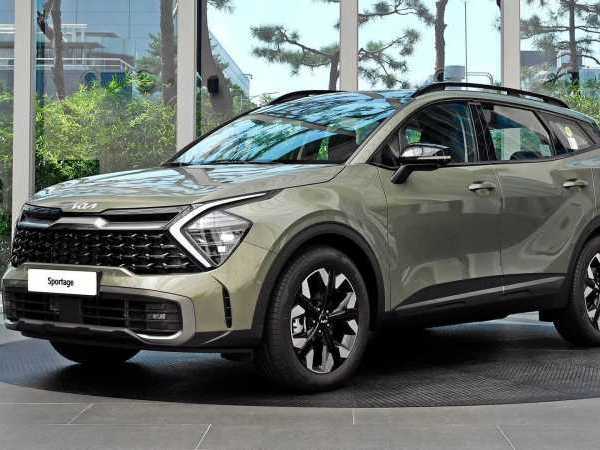
Kia Sportage: Superior Suspension for Smooth Ride
Kevin WongMay 19, 2025
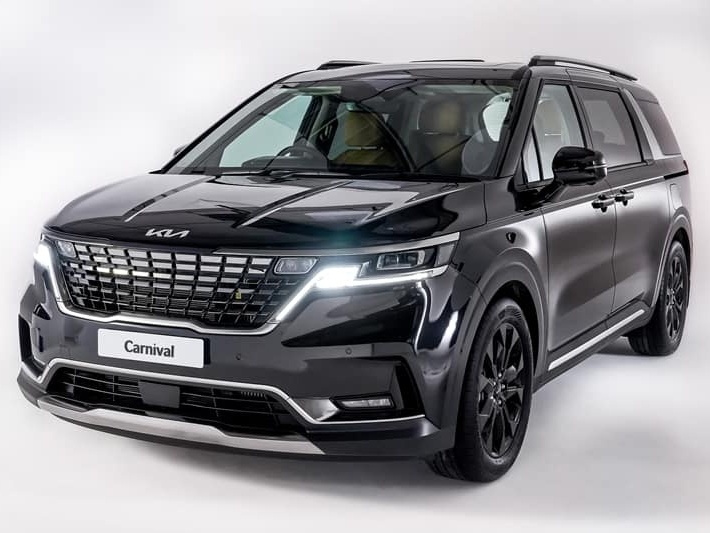
Kia Carnival: Spacious & Versatile for Every Journey
Kevin WongMay 19, 2025
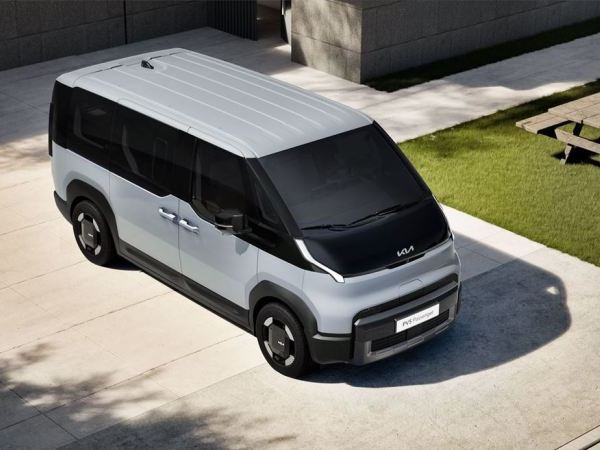
Kia reveals all details of PV5, with a maximum range of up to 400 kilometers
LienMar 11, 2025
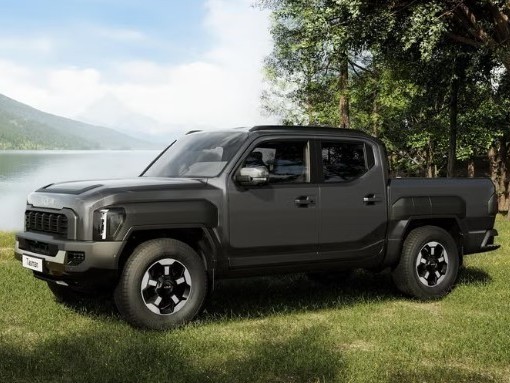
173L cargo box, 3500kg towing capacity, KIA Tasman meets all your needs!
MichaelOct 31, 2024

The interior of Kia's brand new pure electric sedan EV4 is exposed, expected to debut in mid-2025
MichaelOct 9, 2024
View More

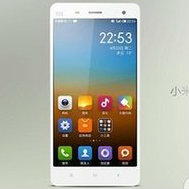










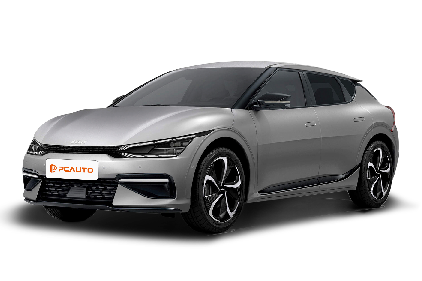
 Cars
Cars




Pros
Cons